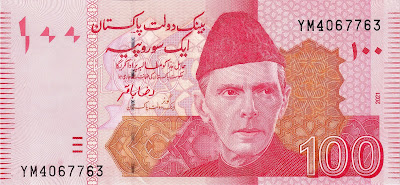The Pakistani rupee (PKR) is the official currency of Pakistan, a country with a history marked by its independence from British rule and its strong cultural identity. Although it is not a commonly used currency outside of South Asia, for collectors and numismatic enthusiasts, it has many interesting aspects worth knowing.
Origin of the Pakistani Rupee
Pakistan was born as a nation in 1947, following its separation from the British Empire and India. During the early years, Pakistan used Indian banknotes, but overprinted with the word "PAKISTAN" to differentiate their circulation.
The Pakistani rupee was officially introduced as its own currency in 1948. Since then, the country has had multiple redesigns of its coins and banknotes, reflecting its political and economic evolution.
- Symbol: ₨ or Rs
- International code: PKR
- Division: 1 rupee = 100 paisas (although paisa coins are rarely circulated anymore)
Banknotes and Coins: A Visual Tour
The aesthetics of Pakistani currency have undergone several transformations. Current designs include:
- The portrait of Muhammad Ali Jinnah, founder of Pakistan, on all banknotes.
- Cultural and architectural themes, such as the Badshahi Mosque, Islamia University, or landscapes of northern Pakistan.
- Bright colors and modern security features (metallic threads, watermarks, special inks).
Most common banknotes: 10, 20, 50, 100, 500, 1000, and 5000 PKR.
Coins: 1, 2, 5, and 10 rupees.
Current Value of the Pakistani Rupee
The Pakistani rupee has suffered significant devaluations in recent decades due to economic and political instability. As of today, the following are approximate:
- 1 USD ≈ 275-285 PKR
- 1 EUR ≈ 295-305 PKR
This value is constantly changing, so it's a good idea to check platforms like XE.com or the State Bank of Pakistan for updated figures.
Pakistan Rupee Interesting Facts
- The word "rupee" comes from the Sanskrit "rupyakam," meaning silver.
- Pakistan was one of the few Muslim countries that retained elements of Mughal architecture on its banknotes.
- In 2022, a redesign of some banknotes was proposed to better reflect the country's cultural diversity.
Is the Pakistani Rupee Interesting for Collectors?
Yes! Although it's relatively easy to obtain modern banknotes, there are some highly coveted older issues:
- Overprinted Indian banknotes from 1947-1948
- Special series or those with printing errors
- Commemorative coins issued by the State Bank of Pakistan
For collectors of banknotes from Islamic countries or regions in South Asia, this is a must-have for any album.
Tips for Finding Pakistani Rupees
- Look in specialized numismatic stores or on platforms such as eBay, Delcampe, or Numista.
- Prefer banknotes in UNC (uncirculated) quality if you're collecting them.
- Be sure to verify authenticity, especially with sellers outside of Pakistan.
The Pakistani rupee is not only a coin with economic value, but also a reflection of the history and culture of a young nation rich in traditions. Whether due to its design, its history, or its rarity in certain issues, it's worth including in any collection.


.jpg)
.jpg)
.jpg)
.jpg)
.jpg)

.jpg)
No hay comentarios:
Publicar un comentario